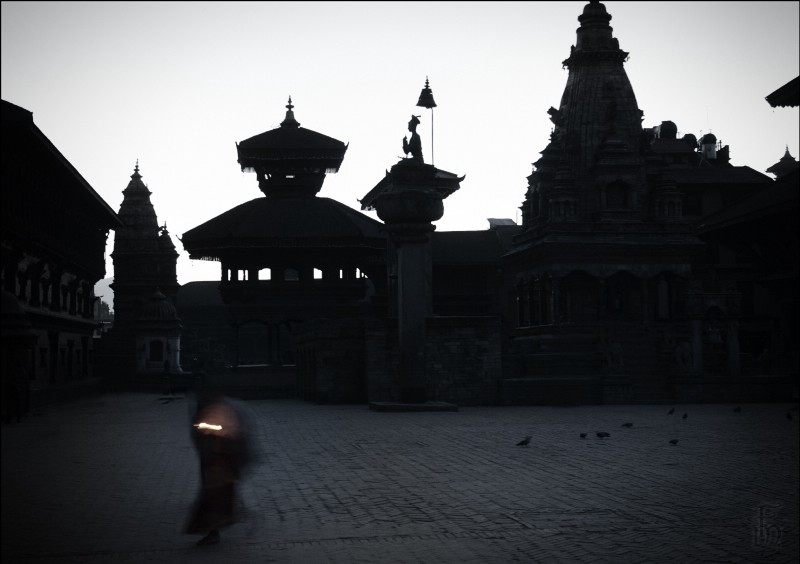

It’s hard to verbalize the scale of the disaster that hit Nepal when an earthquake struck the country on April 25, 2015. But there is no doubt that recent technological advances saved many lives in its aftermath–from drone surveys of affected areas to portable communications networks. Here are some of the ways that technology is helping countries across the world better cope with natural disasters.

Communication Networks
One of the first priorities in the immediate aftermath of a disaster is to reestablish communications. The head of Disaster Response for the nonprofit GSMA Mobile for Development, Kyla Reid, said that cell networks are crucial to coordinating relief efforts for those who are injured, as well as for letting unaffected people tell their loved ones that they’re safe.
“So much of the population in many of the countries that are regularly impacted by disasters–they’re predominantly accessing the Internet through their mobile devices,” she said. “We take for granted that that connectivity is just going to be there and allow us to interface with the assistance and the people that we need to.”
Just two weeks before the earthquake hit Nepal, the GSMA held an Earthquake Preparedness Seminar in Kathmandu. Reid added that the most important part of the event was getting people to speak to each other. “They were able to understand where the gaps were, what existing plans were, [to] meet face to face so that when things did kick off they were much better able to pick up the phone, share information, prioritize together, and provide some mutual support,” she said.

Satellite Mapping
Another crucial part of disaster recovery is mapping the affected areas. In 1999, following the devastation of hurricane Mitch in Central America, an agreement was made to supply free satellite imagery to emergency responders anywhere in the world–pooling the resources of 15 space agencies and more than 30 satellites.
Aiding the professionals are a legion of volunteers on OpenStreetMap who’ve worked to rapidly digitize satellite imagery and provide humanitarian organizations the maps and information they require on the ground. A dedicated OpenStreetMap team can produce details about certain locations otherwise unavailable so that aid workers can reach people at risk and get them the help they need.
In Nepal, less than a day after the quake the ESA’s Sentinel-1A satellite showed that an area as large as 2,300 square miles around Kathmandu had been lifted up by at least three feet. Subsequently, changes in artificial light emissions detected from space were used to pinpoint the worst-hit areas; other data has shown areas that were in particular danger of aftershocks.

Drones and UAVs
Drone technology gets bad press, and there are plenty of valid reasons why, but it’s also playing a vital role in Nepal’s recovery. The country has a sharp shortage of manned helicopters, so drones are doing many of the reconnaissance jobs in their absence, leaving available choppers to embark on rescue missions.
UAVs also have an advantage over satellites–they can fly below the clouds. Overcast conditions made satellite data-gathering tricky in the days after the quake; drones were able to fill in those gaps. Some have seen coordination by an organization called the Humanitarian UAV Network, a group of civilian and hobbyist UAV pilots who support humanitarian work. In recent days, however, there’s been something of a crackdown with the government requesting that operators gain permission before launching drones into the sky.
Finally, it’s hard to overstate the importance of drones to the media. An aerial shot of the devastation in the country is a powerful visual record of the destruction and drives people around the world to donate to those charities organizing relief and rescue efforts.

Renewable Energy
Powering all of the technology above is tricky when grids have been disrupted. In most cases the solution is noisy generators fed by an unreliable supply of diesel fuel. But a handful of groups are working on renewable energy systems that can be deployed quickly and easily in disaster situations.
Following the Haiti earthquake in 2010, many residents were forced to relocate to temporary camps. Charities not only donated 35,000 solar lighting systems, but also installed large solar networks to power health clinics and recharge people’s cell phones. Portable solar generators were also widely used in the wake of Hurricane Sandy in 2012.
But perhaps the biggest legacy of renewable energy relates to the time after the immediate aftermath of a disaster has passed. In Haiti, people took the solar lamps into their homes, making them part of the fabric of everyday life. Other areas affected by disasters have taken the opportunity to rebuild their electrical systems with flexibility in mind–which often means opting for distributed renewable networks over centralized fossil-burning plants.

Robots
In 2011, when an earthquake hit Japan the country’s beloved robots set to work on its recovery. Several teams from the nation’s universities offered up robots to inspect collapsed buildings and other dangerous situations. While many different forms of disaster-recovery robots exist–some are aquatic; some worm-shaped; some can fly–the majority are equipped with infrared cameras, ultrasonic sensors, and even onboard medical supplies.
Robots haven’t been as widely deployed in Nepal as they were in Japan, but the expertise first responders gathered in other countries hit by natural disasters in recent years is increasingly available through global networks. “What I think we’re seeing more of is bilateral information-sharing and advisory within the industry itself,” said Reid. “In the case of Nepal, we’ve had operators from Haiti, from Japan, from the U.S., who’ve been deployed to other emergencies, reaching out and saying, “‘How can we share the strategies we used and the experiences we had to help support you?’ “


How We Get To Next was a magazine that explored the future of science, technology, and culture from 2014 to 2019. This article is part of our Metropolis section, on the way cities influence new ideas–and how new ideas change city life. Click the logo to read more.
